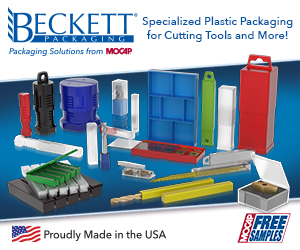Over the course of my career, I’ve received six U.S. patents. I mention this up front because I’ve written a primer on the patent process and intellectual property strategy, which I’d like to share with you in this month’s column and the next. I hope that the lessons I’ve learned and knowledge I’ve gained will help others on a similar journey.
First, a little background
The mandate of the U.S. Patent and Trademark Office (USPTO) is to foster enterprise in the United States by granting legal protection for intellectual property (IP), which it does by granting patents and registering trademarks. There are three types of patents: utility patents (also called letters patents), design patents and plant patents.
Utility patents cover inventions that provide a functional improvement in a process, composition of matter or manufactured article. These have a lifespan of 20 years.
Design patents cover the unique ornamental design of a manufactured item, such as its shape or surface finish. Design patents last for 15 years.
Plant patents cover new and distinct varieties of plants reproduced without seeds through grafting, cutting or budding. These patents last 20 years.
As I received six utility patents, that’s the type I will cover. In order to foster innovation and growth of commerce, the USPTO grants a monopoly on advancements of technology that last for 20 years. In exchange for this monopoly, the patent must disclose the advancement so that someone skilled in the art of the patent can reproduce the technology. A mathematical formula cannot be patented, but a process or physical embodiment of an idea can be. My patents were all a physical embodiment of an idea. Two of my patents were an electronic circuit used for making geometrical measurements and the other four were mechanical devices.
Patents must be filed under the name of the inventor. At the time of filing or later the rights of any patent may be assigned to a third party and recorded by the USPTO. For example, an inventor who works for a company may assign the patent rights to that company. Patent rights are an article of commerce and can be bought and sold. Utility patents have claims that can be enforced in a court of law. A utility patent granted by the USPTO bars any party but the patent owner from reproducing or selling the invention in the United States for the life of the patent. Other countries have the same or similar laws, but the rule of law varies from country to country.

In the United States a patent application must be filed within the first year after the first public disclosure of an invention. In most foreign countries, patent applications must be filed before any public disclosure. Also, the first application received by a patent office has priority over any subsequent application the office receives. Different people may be working on the same idea, so conflicts can arise.
To minimize conflicts, since 1995 the USPTO has allowed the filing of a provisional utility patent application. This application does not need to have formal claims or follow the format of a non-provisional application, but it must be enabling. A provisional application must disclose enough detail so the technology can be reproduced by someone skilled in the art. The provisional application can be as easy as making a copy from an engineering notebook that describes the discovery process.
A provisional application establishes a priority date for a later non-provisional patent application.
However, if a patent is granted, the 20-year term is determined by the filing date of the non-provisional application, not the provisional application filing date. The provisional application establishes the date for the invention’s public disclosure.
If you are an inventor, it is important to work within this time frame. If you file a provisional and miss the one-year anniversary, you have abandoned your invention and it is open to the world.
Once a priority date is established, the invention is covered by a patent-pending status, which can be used in advertising material and on products using the technology. The patent-pending notice provides no legal enforcement, but publicly using the status acts as a warning to competitors and strengthens infringement claims if a patent is later granted. Note that it will be years between the priority date and the issuance of any patent.
If another party copies the invention during its patent-pending status and a patent is subsequently issued, the patent holder can sue the other party for infringement and monetary damages. The monetary damages can amount to all the money the other party made from the copied invention, plus a penalty. However, the other party can claim honest ignorance of the invention’s patent-pending status and present a stronger defense.
Over my career, I’ve been a patent consumer who learned lessons along the way. I made money from all my patents. That said, if I had learned just a bit more back then, I would have made less mistakes and more money. An educated consumer is a better consumer.
Next month I will take you through the process of getting a utility patent.
Related Glossary Terms
- filing
filing
Operation in which a tool with numerous small teeth is applied manually to round off sharp corners and shoulders and remove burrs and nicks. Although often a manual operation, filing on a power filer or contour band machine with a special filing attachment can be an intermediate step in machining low-volume or one-of-a-kind parts.







